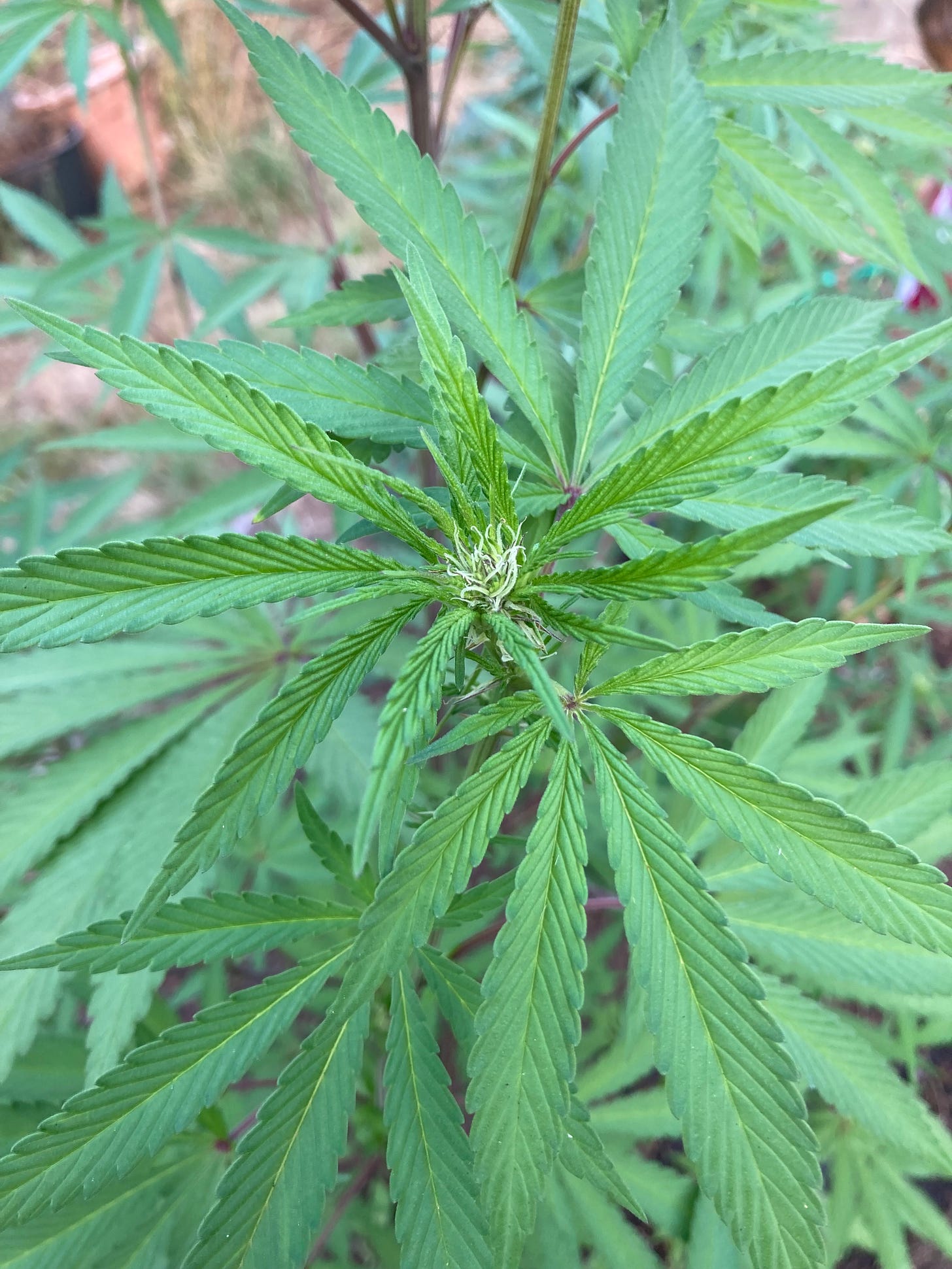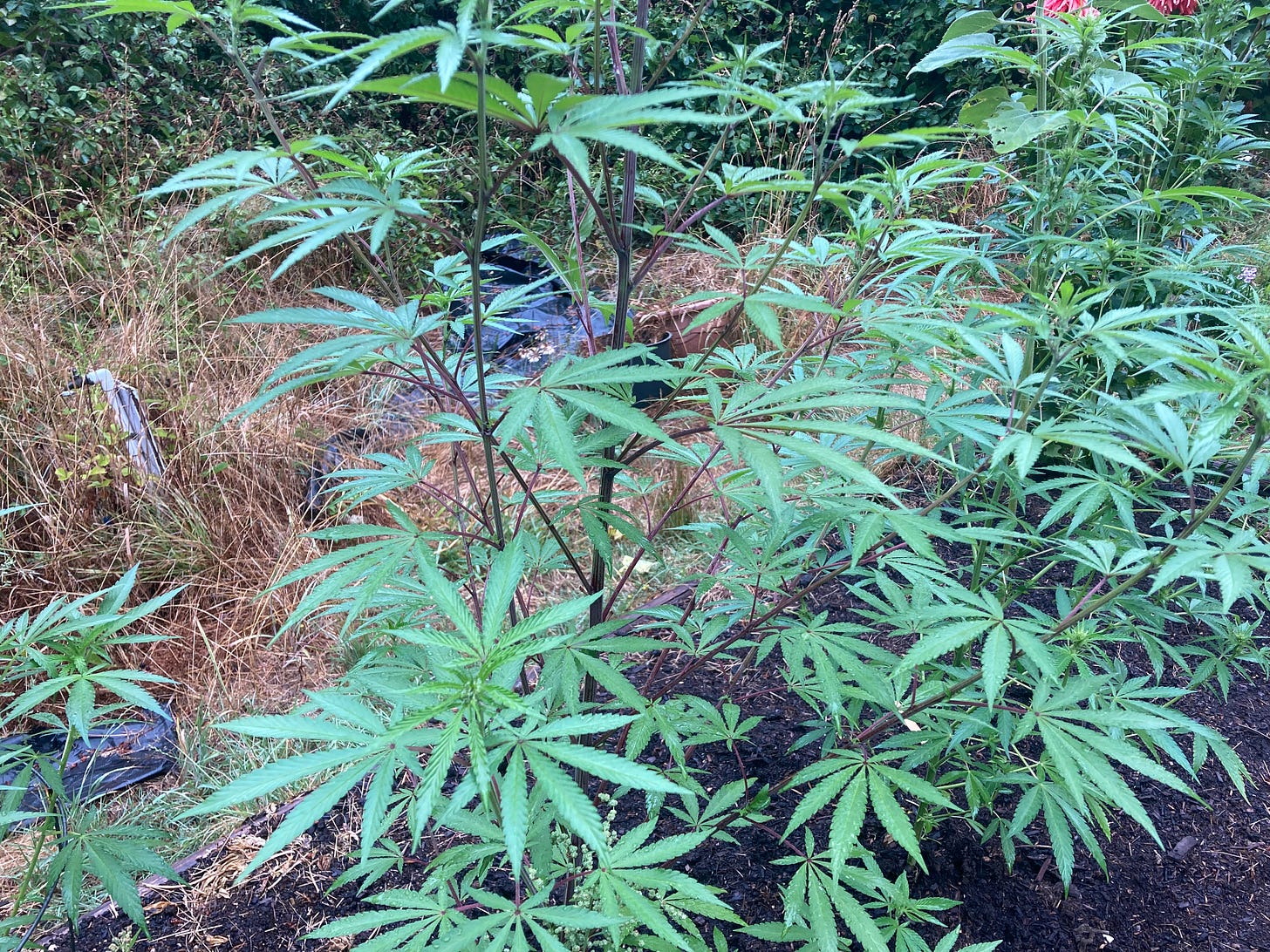In this article I aim to give an overview of how cannabis can be added as an important herb in your medicine chest. An apothecary unto itself, cannabis has a long history of use from every corner of the globe. Let’s dive in!
Disclaimer: This article is for information purposes only. Deciding whether to consume cannabis is a personal choice that must be carefully considered, taking into account the location where you live, legality issues, and your particular physiology. While cannabis can be helpful medicine for the majority of people, there is a small percentage of people for whom it is not a good match. Also please consider the quality and safety of the product you chose. I will address this in more detail in the article.
Cannabis is a gateway
Cannabis is a power plant. A power plant is a plant that has the power to transform your mind. Like other psychedelics cannabis has the ability to open us to new ways of thinking, of relating, and can foster a deeper relationship with the natural world. For some, cannabis is a gateway into learning more about plants in general. A power plant can be an herb, that like other herbs contains a large number of constituents with various effects. Cannabis is a versatile herb. Used as a fiber, used as a food staple, and used as medicine for a variety of ailments.
Medicinally, cannabis is an analgesic, countering pain of all kinds, it can be used as an anti-inflammatory, an anti-depressive, and anti-anxiety herb, as well as a libido enhancer. Cannabis can help counter headaches, muscle spasms, and poor sleep. It can also be used as a respiratory aid. How can this one plant be so useful in so many areas? The answer is somewhat complex, but as mentioned in my previous article on cannabis, it has to do with the endocannabinoid system, and its overarching importance in the body.
The key in regard to medicinal cannabis, is that it largely depends on strain, preparation, and dose for how effective cannabis can treat any one issue.
I like Susun Weed’s analogy of cannabis strains, to dog breeds. “Tell me about a dog,” is about as unspecific as “tell me about cannabis.” They can be vastly different things, like a pug vs. a German Shephard.
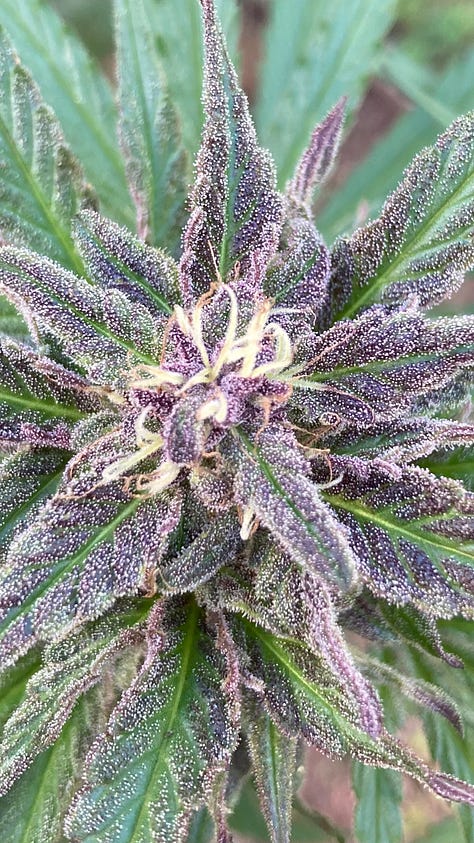
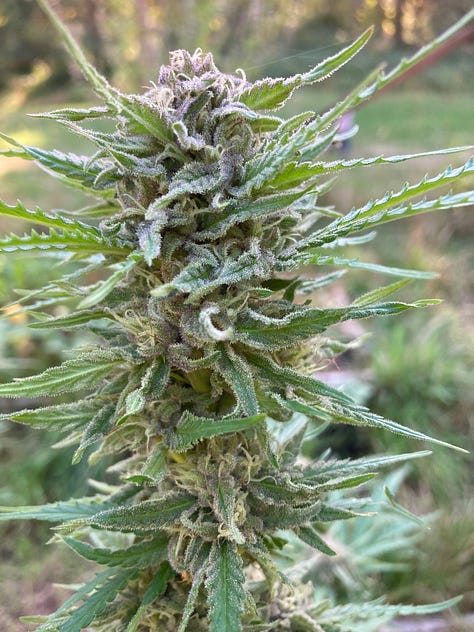




That being said, with a little basic guidance, ingestion of cannabis, especially when smoked, can often help, even when little attention is paid to the details. I say this so that you don’t feel intimidated by all the lingo and finer points behind cannabis as medicine. Like other herbs, making a remedy from cannabis requires some attention and knowledge, but is simple enough and can be done at home.
What is cannabis medicine?
There are a variety of cannabis products available, some of which require a great deal of specialized equipment, and sometimes use dangerous chemicals, such as solvents for extracting cannabis constituents. This is beyond the scope of this article. To understand these products and more, I suggest visiting sites created by those in the cannabis industry. There you can learn about extracts, concentrates, topicals, etc.
In general, I stay away from high potency products, and I consider them to be “druglike.” I understand that for some situations they could be helpful and needed. Please do your own research.
Cannabis has some quirks about it that don’t exist with other plants, so it helps to get some clarification on terms:
Tincture: if you go to a dispensary, a cannabis tincture usually will consist of either an alcohol-based tincture, made in a similar way to all other tinctures, or sometimes it will consist of an oil-based preparation in a dropper bottle. When I refer to a tincture, I will be only referring to a medicine made by using whole flower macerated in alcohol. I plan to include some recipes in my next article Cannabis: Queen of the Herbs Part III. For now, check YouTube for basic tincture or butter recipes.
Infused oil: typically, an infused oil consists of fresh plant material that has been roughly chopped and steeped in oil for a period of 3-6 weeks. I find cannabis infused oil-based preparations are best prepared by heating the plant material at a low temperature for a number of hours and then straining the final product.
Decarboxylation: this is a process at which the cured cannabis flowers are heated at a low temperature to activate the THC, CBD, and other cannabinoids prior to making a remedy. THC is active after being heated in an oven at 250℉ for 60 minutes, CBD is active after 90 minutes. This process converts THC-A, the acid form of this compound to THC, the form we associate with the psychoactive powers of cannabis.
Edibles: In short, edibles refer to any cannabis containing product that you can eat. Gummies, chocolates, hard candy, etc. Many of the products available for sale are made using isolates, or other forms of extracts. In short, they are not “full spectrum,” as in, made from the whole flower. You know if a product is made from whole cannabis if it smells and tastes like cannabis. When I work with cannabis, I make a butter using the whole flowers. I can then add that butter to any recipe I may want to make, taking into consideration, dosage amounts for each unit, of whatever I’m making.

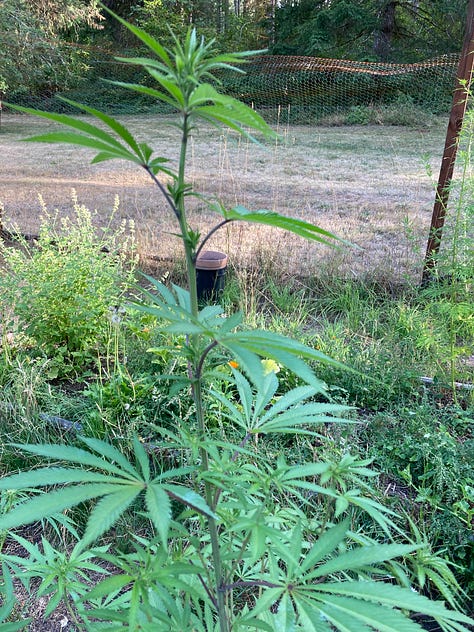
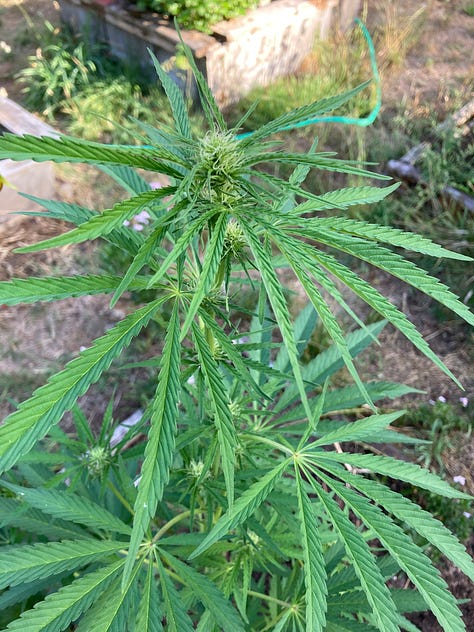

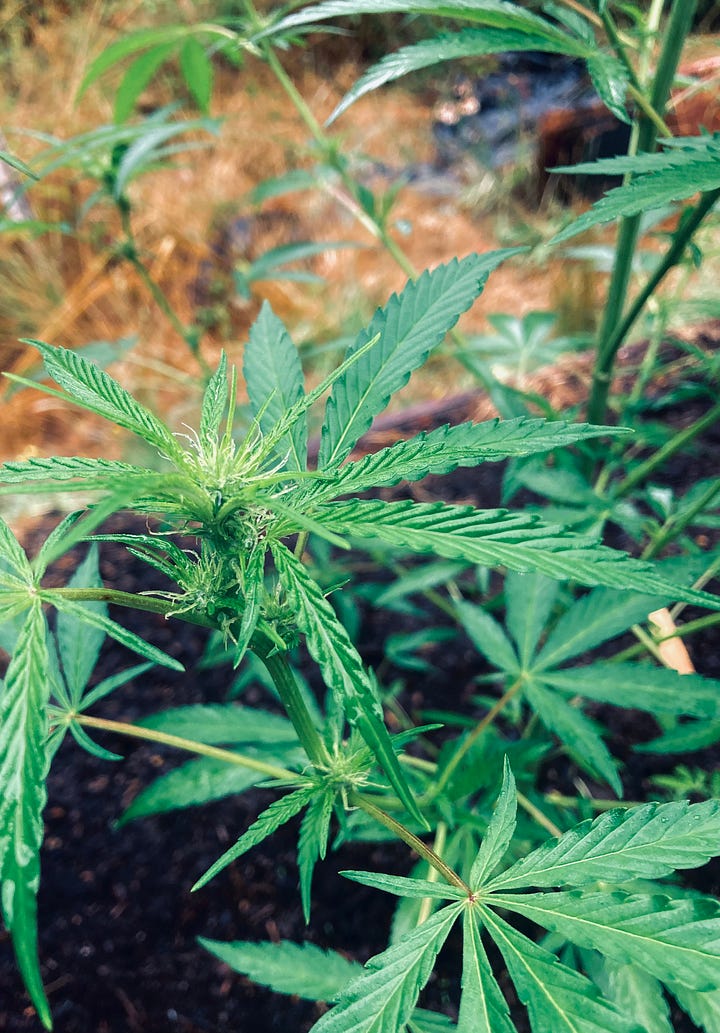
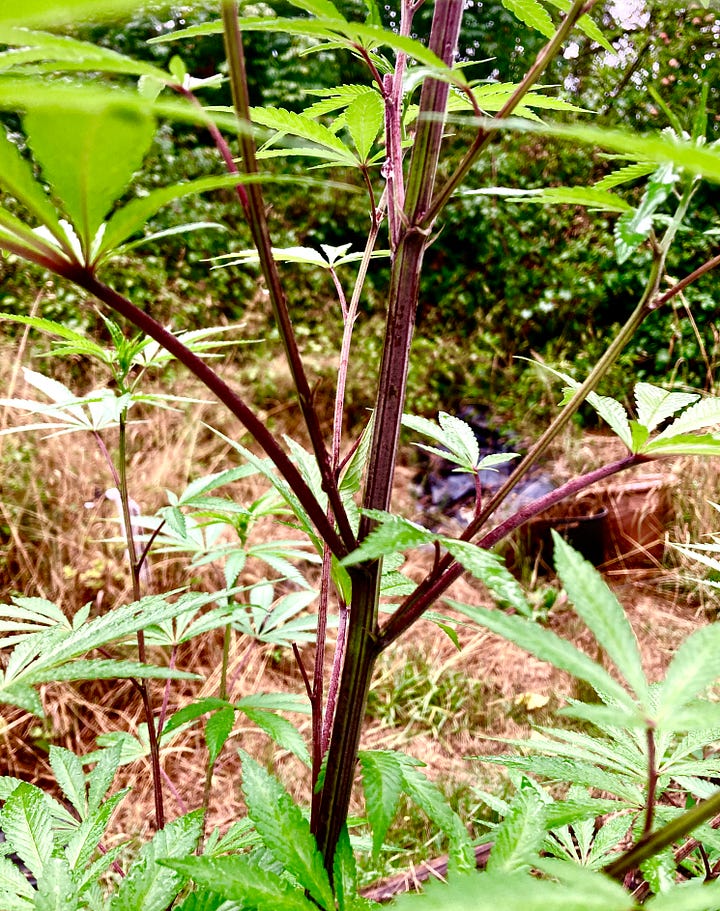

CBD is a cannabinoid that has become well known for decreasing inflammation, and stabilizing mood. It hardly has any psychoactive effect, and plants that are high in CBD usually have a CBD content of about 15-18% and are very low THC. Topical salves and creams can be made from high CBD cannabis and be helpful when dealing with muscle pain and soreness.
THC is the cannabinoid that produces the psychoactive effects of cannabis. We know that it is very similar to the neurotransmitter, anandamide, which binds to the CB-1 and CB-2 receptors located throughout the body. It seems to affect dopamine and serotonin production as well as other neurotransmitters and is associated with feelings of safety and pleasure.
Warning: In high doses THC can induce tachycardia, anxiety, and even create visual or auditory disturbances.
There are a couple other cannabinoids that have been studied such as CBN and CBG. I’m not going to get into those, but there is some interesting writing on these as well, and strains containing more of these cannabinoids may be especially beneficial for some specific situations.
Mental health aid:
Cannabis is expert at helping to relaxing our muscles and helping us to connect with our bodies. This can be useful for unwinding from stress, like a job sitting at a computer or physically demanding work. Cannabis is a plant that helps to open up the third eye. Allowing our vision to become broader, and giving us perspective when we are confused, or tense about something. Cannabis connects us to our emotions. In a busy world, it’s easy to get lost in the daily business of life. Including some cannabis in our routine, can allow us to contact buried emotions, help us to access a flow-state and move through experiences. When used consciously, cannabis can help us to self-regulate and take account of our inner state.
When depression hits, a small amount of high THC cannabis can bring fast relief.
For countering anxiety I like cannabis tincture. I think both high CBD tincture, or a mix of CBD and THC can be helpful. Start slow. One drop may do the trick.
When utilizing cannabis to help with mental distress be sure to include other beneficial activities like stretching, taking a walk, or resting when possible. Give the medicine some time to bring an effect.
Countering pain:
A 1:1 ratio of THC to CBD is often the most effective to counter pain. This can be achieved by combining a high THC strain with a high CBD strain to make a tincture or an oil. CBD will dampen the effects of THC, while also adding anti-inflammatory effect. You can also make a smoking blend using these two strains. I make separate high THC tinctures and high CBD tinctures and then mix them as needed. During a time of intense pain, I turned to cannabis butter. I found I could ingest fairly large doses without much psychoactive effect. Something about the pain “ate up the THC.” It helped with the pain, and I felt some effects, but was surprised that I didn’t “feel high.” I think that since THC acts upon our endocannabinoid system, when we are in pain those receptors have a greater capacity to use the compounds in cannabis, leaving us with relief, but not feeling “stoned.”
Countering PTSD:
In his book, The Botany of Desire, Michael Pollan mentions that cannabis can make one forget. This forgetting can actually be very helpful for those enduring PTSD. It can bring relief from intrusive thoughts and memories. It can help you re-write your story and bring you into your body and the present. There are veteran groups that have actively fought for the right to legal cannabis to help those suffering.
Fighting Addiction:
I know for myself cannabis was a great friend to help cut back on alcohol consumption. In states where recreational cannabis has been legalized, use of alcohol has decreased significantly. There is also evidence that cannabis can be helpful in cessation of opioids/opiates. Since many become addicted to these drugs because they are managing pain, cannabis has the ability to ease the transition off opiates. There are even some treatment centers that use the “California sober” framework to help people recover from drug addiction.
Cannabis is not a drug. It is a plant with hundreds of constituents that grows in soil and can with minimal tools and basic knowledge be made into simple home remedies to help us heal. Once we refine, isolate, and purify those compounds, then we have a drug or “druglike” substance.
Sleep aid:
Cannabis is known to bring on sleep. The cannabinoid CBN is associated with sleepiness. Indica’s are also known to bring on deep relaxation. A little amount as a smoke or tincture within an hour of sleep can help. Try more, if not feeling the desired effects. Many people use gummies as a sleep aid, but like I said, these can be tricky to dose and often use isolates. Ask at your dispensary what may help, or experiment with your own remedies.
A note on smoking:
Lots of people don’t like the idea of smoking due to the fear of damage to the lungs. While tobacco smoking is associated with many detrimental health outcomes, smoking herbs is not. This is mostly due to the lack of additives in herbs, and quantity. Additives are what cause so many problems for tobacco smokers. They also tend to get addicted quickly to nicotine, and therefore smoke large quantities per day. There are a couple ways to approach this. Smoking can be avoided by using a vaporizer (heats plant material, doesn’t combust or burn it), edibles, or tincture. That being said, smoking (taking a little toke from a pipe, joint, etc.) is a surefire way to get all the beneficial constituents, and fast relief, without ill effect.
Cannabis complaints:
The most common complaints after cannabis ingestion are dry mouth, anxiety, and forgetfulness. With proper planning and care, these can generally be avoided or dealt with easily. Cannabis is non-addictive. It doesn’t create a physical dependence, and people who are chronic smokers will not suffer much physical effects when they quit. Cannabis does have the ability to become habit forming. If you think you are ingesting too much, try cutting back. Be conscious of your use and remember to respect the plant. She will reveal herself to you.
Using cannabis wisely:
Start slow. Take a small puff if smoking, or one drop if tincture, or a tiny piece if edible. Too much THC can bring VERY UNPLEASANT RESULTS. Rapid heart rate, disorientation, paranoia, can be signs of a too high dose. For example: when smoking I place a pinch of high CBD strain cannabis into the bowl of a clean glass pipe, and then add a tiny pinch of high THC flower. If you are rolling a joint, take one or two puffs, and save the rest. You don’t have to smoke it all in one go.
Start with flower. There are a number of cannabis products on the market these days. In states where recreational cannabis is legal, like here in Oregon, they are sold and easily accessible at any dispensary. The quality of ALL cannabis products varies. In general, I look for something I could make at home and isn’t highly processed. You can ask the budtender about organic farming practices, etc.
Be wary of edibles. It’s really easy to overdo it because there is a long delay between ingestion and feeling the effects. Sometimes people think that since they don’t feel much, they didn’t consume enough and take more. This can be a BIG mistake. You will not die from cannabis intoxication. You may “feel like you're dying,” but there are no CB-1 or CB-2 receptors located in the central brain stem to cause a disruption in autonomic bodily functions like breathing (unlike opiates/opioids).
Please don’t make the mistakes of being rude and reckless with your cannabis (to yourself and others). Find a place you feel safe and secure (a natural setting is sometimes nice) and be free from immediate responsibilities. Give yourself time to enjoy the sensations that arise. Sometimes new or unexpected emotions may bubble forth.
Cannabis tends to catalyze flows of consciousness. This can be a powerful experience. Go with it.
Keeping in mind respect for this herb and the gifts it provides for humanity will ensure that cannabis and people can continue a mutually beneficial relationship into the future.






